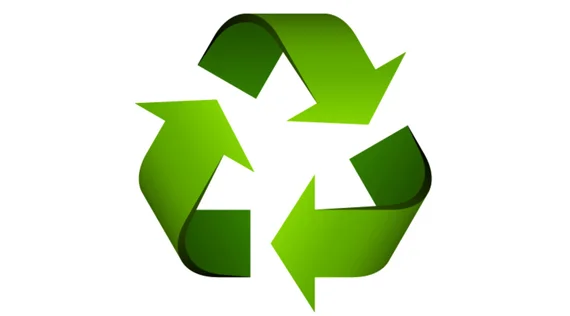
SEATTLE (Waste 360): The U.S. throws away about $11.4 billion worth of recyclable items and packaging every year, according to a report published by San Francisco-based As You Sow, a nonprofit organization that promotes corporate responsibility through shareholder advocacy. To combat this issue, many cities are taking action, but few have considered utilizing technology to promote recycling.
Shawn Chandler, senior member of the Institute of Electrical and Electronics Engineers (IEEE) and director of IT at PacifiCorp, a Portland, Ore.-based electric power company in the western U.S., has researched ways people and technology can work together to make cities more sustainable through the promotion of compostable plastics, sustainable packaging and recycling programs.
“The Internet of Things (IoT) is a large, distributed technology platform intended to connect sensors with applications and applications with people, businesses, government and services,” he says. “Considering each component as an area for potential benefit, we can examine municipal recycling and other waste stream management systems and evaluate potential uses for new technologies.”
Municipalities can incorporate resource efficiency to function at the highest yield with the least impact on the environment in smart agriculture, transportation and energy production systems.
“Generally, IoT enables a host of ‘smart’ applications that can increase agricultural yields, decrease natural resource impact due to human activity, enable and manage more efficient transportation and improve the energy system through energy savings and efficiency in energy generation,” says Chandler.
Anne Germain, vice president of technical and regulatory affairs for the National Waste & Recycling Association based in Arlington, Va., says cities need to reduce recycling contamination.
“One contaminant that has caused significant problems in the industry is lithium batteries. As these become more common, it will become worse. However, these batteries also hold valuable materials,” she says. “The U.S. [Department of Energy] launched the Battery Recycling R&D Center to provide funding to support research on recycling. It’s too early to tell what will happen, but if this research leads to viable lithium battery recycling, then perhaps the batteries will be actively recovered separately from municipal recycling, making it safer for trucks and MRFs [materials recovery facilities].”
Decreasing individual waste streams by improving habits is key to promoting recycling, but it needs to be measured, according to Chandler.
“Sustainability can refer to maintaining a level of growth and specifically to ensure that social, environmental and economic interests can continue to adapt without any one interest being developed at the cost of another,” he says. “People can readily address sustainability through depleting their waste streams and through reducing, reusing and recycling. These habits are better enforced through sense and understanding impact. It is very difficult to improve without measurement.”
Germain says recycling companies are working hard to meet the demands of their end markets for higher-quality materials.
“Part of that effort is adding equipment to get a better quality bale—more optical sorters and robots at the MRF,” she says. “But, increasingly, they’re trying to attack the issue at the source—looking at what’s actually in the carts and dumpsters by utilizing cameras to detect contamination. With some integrated systems, the driver is able see contaminants recorded by a camera and then log which cart was contaminated, providing feedback to residents.”
Germain references a recent local news storyaddressing this that led to numerous calls to the municipality asking for clarification on what is recyclable.
“This demonstrates that even knowing that inspection might take place can lead to improvements,” she says.
There are production alternatives that have the least impact on the environment when disposing and managing waste streams.
“Avoiding packaging using non-biodegradable plastics and production using recycled materials that can re-enter the supply side are the best alternatives,” says Chandler. “Generally, partnerships between recycling material suppliers and the packaging industry also produce benefits and supply chain management that can decrease overall costs.”
“Green” technology like industrial lifecycle analysis, carbon footprint assessment and mitigation can be utilized to promote recycling efforts.
“It’s important to note that recycling success can be tied to willingness to commit to the recycling behavior in a population, since there is no incentive for altruism,” says Chandler. “Encouraging a community to recycle then needs to come from many communication sources, and just like marketing, it’s about the number of impressions served and how aligned they are.”
Chandler suggests more frequent and consistent messaging.
“The reason that advertising through commercials, print and web works to sell specific products is because the human mind is exposed to a brand, through imagery and sound repeatedly, with the same information. This is proven to impact a person’s buying behavior,” he says. “Here, we are trying to impact a community’s recycling behavior. More frequent messaging and more aligned imagery and sound is then one way to help alter a community’s behavior. This can be accomplished through public-private partnerships, specific promotions and communication about the lifecycle of products.”
Courtesy: https://www.waste360.com
| Copper Scrap View All | |
| Alternator | 0.32 (0) |
| #1 Copper Bare Bright | 3.76 (-0.01) |
| Aluminum Scrap View All | |
| 356 Aluminum Wheels (Clean) | 0.73 (0) |
| 6061 Extrusions | 0.64 (0) |
| Steel Scrap View All | |
| #1 Bundle | 460.00 (-15) |
| #1 Busheling | 480.00 (-15) |
| Electronics Scrap View All | |